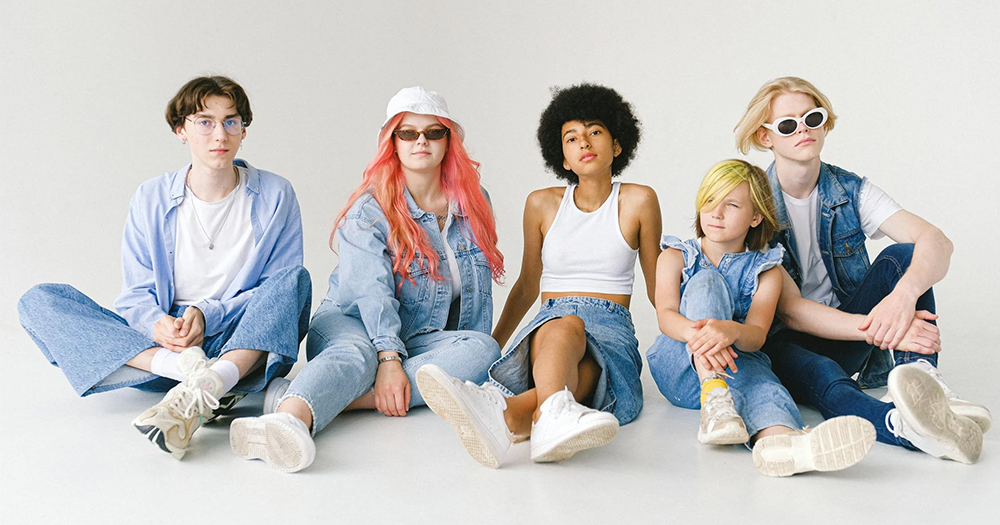Within a progressing society, the want for a more inclusive, gender-neutral option of self-expression has become more prominent in the fashion world. With an act as simple yet impactful as a choice in clothing, the gender-neutral fashion movement has become a grand force in pushing against strict gender codes and labels from the past. It aims to push all tables together so that everyone can have a seat.
This sounds like a dream come true, right? But in said strive for progressiveness, therein lies a common challenge to set back any movement: is everyone getting the equal chance they need to express their best selves?
Writing for The Guardian, Freya Bennett describes a pattern she faced when observing the movement in modern children’s clothing. While encouraging their daughters to embrace neutrality in their clothing and toy selections, she notices fellow parents chastise and turn down what is traditionally seen as ‘girly’- frills, purples and pinks have become a major distaste when compared to green and blue counterparts. This is undoubtedly a result of the clothing trends of past decades which places society in a two-box sorting system: what is ‘feminine’ and what is ‘masculine.’
“Despite the push for gender neutrality, there persists an implicit devaluation of traditionally ‘girly’ elements,” she states, noting how parents sometimes make fun of their children for picking the ‘feminine’ over the neutral.
It becomes prevalent that, in the attempt to embrace the unisex, sight is lost on the choice of the child. When in conversation with a mother like herself, an assumption is made that Bennet must be annoyed at the fact her own daughter had chosen the typically feminine route of outfit and activity.
The same conversation applies to men and boys when choosing the dress over the pants. Bennett points out how “a double standard emerges where girls who donned the traditionally ‘boys’ clothing are accepted fully while boys opting for a skirt are labelled as ‘weird’.”
Somewhat unsurprisingly, elements that are traditionally seen as feminine are still treated under a sub-par and inferior perception; the very issue that has been fought against by today’s feminist foreparents.
In a more forward-thinking movement, how may acceptance of self-expression be at stake when being told a certain way to dress is ‘wrong’ or ‘undesirable’? If the greens, blues and firetrucks of boys’ fashion can be integrated into the gender-neutral expression, why can’t we do the same for pinks, purples, frills and unicorns?
The unisex fashion movement aims to go against the grain, to stir the gender binary and to dissent from the ‘masculine/feminine’ binary concepts. Along with it, options for a more inclusive and accessible means of dress become open for all identities. But, as Bennett entails, it seems that a few folks may have missed the point…
All in all, what makes up the clothes that have sparked so much debate? What holds them together?
Fabric and thread.
Fabric and thread? Why is there such a fierce debate about those two simple things? Why create a whole movement on just fabric and thread?
The movement is not about just the clothes; it’s about the push against labelled letter-box closets in order for individuals to have their own fashion choices. Their choice, their use of imagination and expression in curating outfits is what such a booming movement stands for: everyone is entitled to their own self-expression, no matter their size, shape, colour, ability or gender identity.
If girls want to wear a shirt with a dinosaur riding a motorbike, then they can. If boys want to wear the flowiest princess dress out there, then so be it. Fashion is what you make of it.
© 2024 GCN (Gay Community News). All rights reserved.
Support GCN
GCN is a free, vital resource for Ireland’s LGBTQ+ community since 1988.
GCN is a trading name of National LGBT Federation CLG, a registered charity - Charity Number: 20034580.
GCN relies on the generous support of the community and allies to sustain the crucial work that we do. Producing GCN is costly, and, in an industry which has been hugely impacted by rising costs, we need your support to help sustain and grow this vital resource.
Supporting GCN for as little as €1.99 per month will help us continue our work as Ireland’s free, independent LGBTQ+ media.
